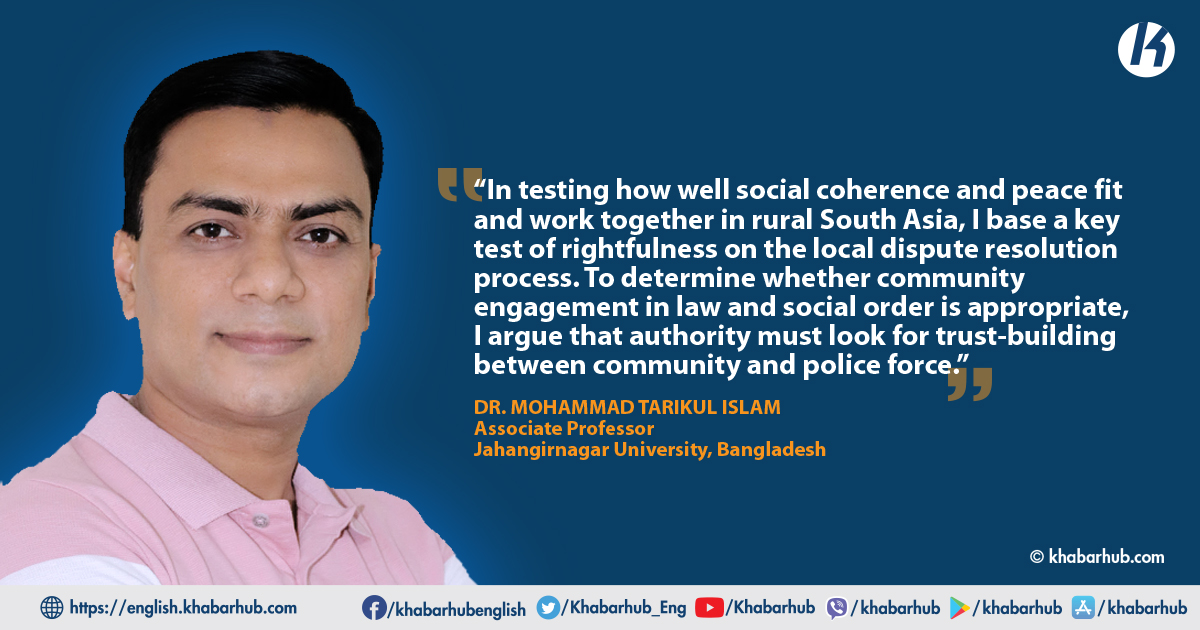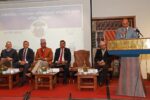People are able to monitor their everyday work and involvement in other activities that are controlled forms of human interaction because of the underlying characteristics of local government as a social organization.
These interactions include affiliation, collective resources, substitutability of individuals, and recorded control. These interactions come together to constitute common features in basic social units such as family, enterprises, clubs, states, etc.
These are social organizations. Local government as a social organization happens in everyday life. To have a sense of identity with the social organization, being closer to one another helps build a sense of community.
While organizations link many like-minded people, it can also cause a separation with others not in their organization due to the differences in thought. Social organizations are structured to where there is a hierarchical system.
More attention should be paid to access for poor and otherwise vulnerable people, procedural fairness shielding litigants from local power structures, and matters of effectiveness.
A hierarchical structure in social groups influences the way a group is structured and how likely it is that the group remains together.
Four other interactions can also determine if the group stays together. A group must have a strong affiliation within itself.
To be affiliated with an organization means to have connection and acceptance in that group. Affiliation means an obligation to come back to that organization. To be affiliated with an organization, it must know and recognize that you are a member.
The organization gains power through the collective resources of these affiliations. Often affiliates have something invested in these resources that motivate them to continue to make the organization better.
On the other hand, the organization must keep in mind the substitutability of these individuals. While the organization needs the affiliates and the resources to survive, it also must be able to replace leaving individuals to keep the organization going.
Because of all these characteristics, it can often be difficult to be organized within the organization. This is where recorded control comes in, as writing things down makes them more clear and organized. Government exists primarily to provide services that will make life worth living.
Accordingly, local governments as a third-tier government are created to bring the government closer to the people at the grassroots and for the transformation of lives at the rural level.
One of the ways of bringing government closer to the people at the grassroots is through the delivery of service in a satisfactory, timely, effective and adequate manner.
The search for a seamless service, the holy grail of social care, has led local authorities to merge social services departments with housing, education and even arts and leisure. Experts have had doubts about how well social work would survive some of the unions (the lowest tier of the local government in Bangladesh) and fresh questions will be thrown up by publication later today of what is forecast to be the most damning joint review of a social services department so far.
In testing how well social justice and social harmony fit and work together in rural South Asia with a particular focus on rural Bangladesh, I base a key test of rightfulness on the local dispute resolution process under the auspicious of local government.
To determine whether community engagement in law and social order is appropriate, I argue that we must look for trust-building between community and police force by the local government bodies based on coherent ideological grounding.
I have constructed an argument for a two-stage process to endow the local government for restoring and maintaining social harmony, coherence and peace.
Lack of access to justice is most severe for the socially excluded and marginalized, who face socio-economic and cultural discrimination and have minimal opportunity to voice their issues and seek redress.
In rural areas of South Asia particularly in Bangladesh, Nepal, India and Pakistan, generally occurring problems are violence against women, inheritance, dowry, divorce, financial maintenance for wife and children, fights, land disputes, eve-teasing, etc.
Within the overarching context of poverty and social exclusion in South Asia, certain groups are subject to further vulnerability and barriers in claiming rights and remedies.
Moreover, a lack of clear understanding of duties and responsibilities on the supply side and a lack of knowledge and information regarding available remedies and services on the demand side combine to severely limit the scope for the powerless to obtain justice in both the formal and informal system.
More attention should be paid to access for poor and otherwise vulnerable people, procedural fairness shielding litigants from local power structures, and matters of effectiveness.
Only then can local government in South Asia truly fulfill their promise of providing redress for those most in need of social justice and human security.
State of rural dispute resolution in Bangladesh, India, Nepal and Pakistan is concisely refereed while endorsing the idea of social coherence and peace.
In a highly individualized urban society, we tend to think of dispute resolution in terms of the formal justice system, but that for most of history and even today for many people without access to that system dispute resolution is based on various informal mechanisms that may or may not be integrated with the formal system.
Informal dispute resolution tends to be more accessible and effective, but it often operates in summary or even arbitrary ways.
The formal judicial system places more emphasis on procedural justice, but its accessibility and effectiveness are often in doubt. If we look at the South Asian countries, for a long time, the judicial system has been under enormous pressure, with unmanageable workloads and an inadequate number of officials and staff to deal with a backlog that amounted to millions of cases.
What is more, the effectiveness of the system is jeopardized by a lack of capacity and enforcement problems. While the powers of village courts are significant, their capacities are limited in practice.
What is more, the rural poor and other vulnerable people are unable to afford the cost of litigation and don’t have a sufficient understanding of how to gain access to justice in formal courts on issues that, in any case, are better resolved at the local level.
Only a few people in developing countries can afford to take legal action. In addition to that, the formal judicial system has other problems.
It suffers from ever-growing caseloads, leading to a situation where individual cases can drag on for years if not decades.
In rural areas of South Asia particularly in Bangladesh, Nepal, India and Pakistan, generally occurring problems are violence against women, inheritance, dowry, divorce, financial maintenance for wife and children, fights, land disputes, eve-teasing, etc.
Most of these are social rather than criminal problems. Unsurprisingly, therefore, practices of informal dispute settlement continue.
Bangladesh has inherited from colonialism an adversarial judicial system that is highly formalized and places great emphasis on due process.
Unfortunately, the system is incapable of meeting the needs of society, especially in the countryside: Fees are unaffordable, delays enormous, procedures impenetrable, corruption rampant, and judges biased against poor and other marginalized people.
To bridge the gap between informal and formal dispute resolution, Bangladesh has redesigned Shalish through the 2006 Village Courts Act.
The 2006 act provides for the establishment of a Village Court in every Union Parishad (UP), the lowest tier of local government.
In this way, Bangladesh offers an interesting case where informal dispute resolution has been institutionalized as an alternative route to justice. Ideally, village courts combine the best of Shalish on the one hand “accessibility and effectiveness” and of the formal judicial system on the other “procedural justice”.
The government is working to bring uniformity to mediation through the implementation of the Mediation Act. Community mediation exists in only a small number of villages.
Despite the reform, it remains debatable to what extent village courts work for those who need them most. Rural poor are socially excluded and suffer from discrimination, deterring them from accessing even informal village courts.
Even when they have the audacity to do so, they may not get a fair hearing as procedural justice is undermined by local power imbalances and widespread practices of nepotism and corruption.
What is more, the effectiveness of the system is jeopardized by a lack of capacity and enforcement problems. While the powers of village courts are significant, their capacities are limited in practice.
In theory, every six months the UP chairman has to submit a report to the sub-district (Upazila), but this does not happen in most cases.
Besides, UP is overburdened with other activities and does not have the manpower to keep a tally of judicial decisions and write a formal report about the activities of their village courts every six months.
In India, most of the cases are found to be settled by way of litigation under the auspicious of Panchayat. The quest for justice has been ideal, which the citizens have been aspiring for generations down the line.
With a rapid increase in the number of people approaching the courts, the primary concern faced by the Indian judiciary is the escalation in the number of new cases coming in and an ever-increasing backlog.
Delay in the formal justice administration is the biggest operational obstacle and therefore, poor and marginal people in rural India get confidence to approach Panchayat rather than formal court.
Domestic Violence is also met in the Indian panchayat.
Nepal has a long history of traditional dispute resolution. There are 102 different castes and ethnicities, and 92 different spoken languages.
This rich diversity also extends to dispute resolution mechanisms with many ethnicities and groups having their dispute resolution systems and mechanisms.
The push towards formal litigation during the Rana regime weakened traditional dispute resolution systems, but they did not collapse.
In the wake of the gradually rising trend of social crimes especially addiction to drugs and its trafficking and trading, they viewed only the law enforcers or any other single organization isn’t capable to uproot the crimes.
At present, dispute resolution in Nepal can be characterized as an increasingly formalized judicial sector, coupled with a patchwork of village-level dispute resolution mechanisms.
The government is working to bring uniformity to mediation through the implementation of the Mediation Act. Community mediation exists in only a small number of villages.
Elsewhere, disputants continue to turn to traditional institutions, to the Village Development Committee (VDC) Secretary.
VDC is entrusted with responsibilities for managing local-level conflict and its provisions for the salary of those who are engaged in dispute resolution.
In Pakistan, legal pluralism has taken the form of a tribal justice system and the prominent denomination of this justice system is panchayat across the country.
Women and children are treated as a tool of conciliation and compensation and the equal rights of both genders are not given proper attention in the panchayat justice system.
This sort of biased attitude in the panchayat justice truly undermines the credibility of this entity for the causes of fair play and social justice.
There are serious problems with the way the traditional justice system is practiced in Pakistan.
Rural poor women and vulnerable groups are the main target audience of the rural courts while the women are less exposed and voiced with their demand.
The availability of the rural judiciary services will undoubtedly allow their accessibility in local justice services.
The women-friendly environment in the court premises is thus very important. Local government representatives, rural court officials including panel members need adequate sensitization with gender-friendly behavior, provision should be made for nominating at least one woman in the panel in cases of women’s interest is associated.
In rural Bangladesh, a collaboration between the Police and the rural community has an important role to play in addressing the challenges associated with local-level conflict and seditions.
Wide-ranging community participation is very important for making the community policing forum effective and meaningful for the sake of building a crime-free society.
Transformation of the local justice system is central to the enhancement of equity and inclusion, within the context of broader local governance reform in Bangladesh, India, Nepal, Pakistan, and the rest of South Asian countries.
In the wake of the gradually rising trend of social crimes especially addiction to drugs and its trafficking and trading, they viewed only the law enforcers or any other single organization isn’t capable to uproot the crimes.
Collective efforts of police and community people could be streamlined through the leadership of Union Parishad at the grassroots level.
Union Parishad as the elected and lowest body of the local government is responsible to ensure social peace and stability by the way of resolving local disputes.
While revisiting the major roles and responsibilities of village police of Union Parishad, it has been deceptive that, their duties counterpart the roles of community policing in rural Bangladesh.
Improved police services in turn nurture mutual trust and respect between police and members of the communities that they serve, promote improved communication and collaboration and contribute to increased public satisfaction with police services, all of which translate into safer communities.
The Union Parishad has two types of village police i.e. Dafadar and Mohalladar/Chowkidar and the major functions of the Village Police are to assist the police in the investigation into and suppression of crimes and in arresting criminals; inform the officer in charge (OC) of the local police station about the state of law and order in every 15 days, and to inform the officer in charge (OC) of the local police station about those matters which might create riots or are potentially threatening situations to social peace and harmony.
Community policing works as a vehicle to build peace and ensure safety and stability in society. In many respects, it presents goals, values, and practices that are consistent with restorative justice ideals.
The rest of the South Asian countries could promote the concept of community-based law and order management in the rural areas engaging local government bodies actively.
Today, people living in rural South Asian countries are found to be divided according to political beliefs.
Besides, the rural community should be encouraged to work with police to ensure that local-level problems are resolved by engaging local government bodies.
Polarization between the ruling party and the opposition is very strong even in local government institutions.
Whatever one party does the other oppose. Rural justice is severely influenced by the local electoral politics particularly local government representatives to exert their power and to continue their leadership.
Transformation of the local justice system is central to the enhancement of equity and inclusion, within the context of broader local governance reform in Bangladesh, India, Nepal, Pakistan, and the rest of South Asian countries.
Moreover, the rural judiciary should be strengthened so that nobody can use power to force the verdict in their favor.
Besides, the rural community should be encouraged to work with police to ensure that local-level problems are resolved by engaging local government bodies.
Relevant stakeholders like government, civil society, NGO, United Nations, and donor agencies should work shoulder to shoulder to activate the rural dispute resolution apparatus (village court, for instance in rural Bangladesh) as well as community-driven law and order management to ensure fair play in local dispute resolution and contribute towards safeguarding social coherence and peace in South Asian countries.
(Dr. Mohammad Tarikul Islam is an Associate Professor of Government and Politics at Jahangirnagar University in Bangladesh)









Comment